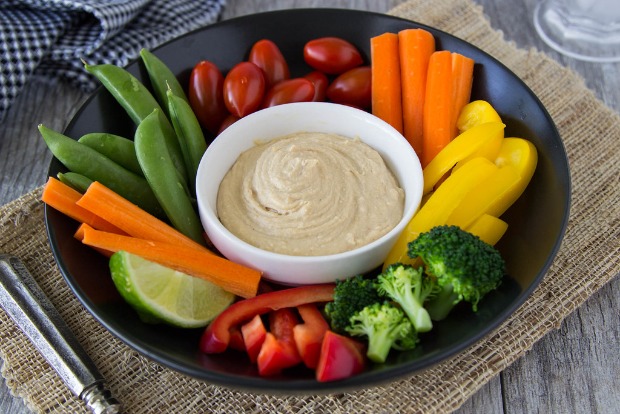“Your recipes look great, but I cannot eat beans or lentils because of a digestive issue (Dr. recommended diet). What could replace these ingredients if I sign up for your meal plans?”
OMG, do I feel you on that.
In the last three years both my husband and I had periods where we couldn’t eat beans or lentils.
Fortunately, we’ve healed our guts and improved our digestion enough to be able to eat most beans and lentils now, though there are a few my husband still chooses to avoid. (He has a chronic GI issue not related to diet that requires extra care and hypervigilance).
Replacing Beans and Lentils
#1 Tofu (and soybeans)
Tofu is the most universal replacement option, and what my husband favors. It tends to work with all flavors and cuisines, plus you can cube it, bake it, crumble it, etc.
On the Meal Mentor app, any recipe using tofu can be replaced with chickpeas or white beans (such as navy beans) if you have the reverse issue.
There’s also canned black soybeans which will work in pretty much every recipe.
#2 Sourgum
This gluten-free grain is a fantastic substitute for beans and lentils IF they’re just being mixed into a recipe, meaning the beans and lentils are staying whole. If you’re supposed to mash the beans or do anything else with them, this isn’t a great option.
I would say I used sourgum the most and still find I ‘crave’ it even though we’re back to eating beans and lentils regularly.
#3 Cauliflower Florets (or cauliflower rice)
There’s a bean-free chili in two of my cookbooks (it’s called “Rustic Chili”) and the “secret ingredient” is cauliflower florets that you mash up with a fork or potato masher into coarse crumbles. It’s one of my favorite recipes to serve guests -- they cannot believe how delicious and filling the chili is even without meat or beans!
It’s my husband’s favorite and what he kept requesting over and over during his recovery.
I find mashed up cauliflower florets (or cauliflower rice) are incredibly universal (goes with all flavors and dishes) AND provides a nice rustic texture and ruggedness that beans often provide.
#4 Tempeh
Tempeh is another fairly universal replacement. Like tofu, it tends to work with all flavors and cuisines.
It’s also a great replacement for sturdy lentils and split peas (brown, black, green--anything but red lentils which are soft and mushy) since tempeh can be crumbled into little hard bits like lentils.
One caveat, the lentils need to be a component of a dish and not the main flavor ingredient. For example, you can’t substitute tempeh (or really anything) for split peas in “Split Pea Soup.” It’s like trying to make cornbread without corn. Save yourself the disappointment and frustration and make something else instead :)
There are a million options out there for you (and hundreds in the App). Swap it out!
#5 Nuts like cashews and walnuts (or sunflower seeds)
Raw cashews and walnuts (soak overnight to help with digestion) are a fairly universal option as a replacement for beans and lentils. Sunflower seeds are another choice if you have a nut allergy.
The upside to raw nuts is I found we needed a lot less to feel satiated. For example, I could usually add ¼ cup nuts to a recipe that called for about 1 ½ cups of beans. It takes a little trial and error to find how much you need to feel satiated afterward, but you’ll find what works for you. If I had to pick one, I’d say cashews work the best.
#6 Quinoa (and other grains)
Quinoa, like sorghum, was a wonderful, easy replacement for me. I bought the precooked frozen kind so all I had to do was add it in at the end. If there were other grains (i.e. rice) already used in the dish I didn’t do the quinoa, or I did but then replaced the rice with cauliflower rice.
Farro, barley, and other “chewy” grains can help make a dish much more hearty when you pull out the beans and/or lentils. I was surprised how much I liked using steel cut oats and/or barley instead of beans in my chilis.
#6 Peas (or edamame)
With Indian, Asian, Italian and some American-style recipes, I tend to use peas instead of whatever bean or lentil is called for if I need a replacement.
I also like how peas add a nice pop of color and are ready for me in the freezer. I don’t need to do anything else, which is nice.
With Asian dishes, I tend to use shelled edamame instead of peas unless my guest is soy-free.
Peas are a great soy-free alternative to edamame, hence why it’s always an optional ingredient in the App! I like to make sure everything can be made soy-free and gluten-free for you too.
FYI--Green beans have worked great as a substitute for me in Asian and Indian dishes as well, but since green beans are (quite literally) immature beans, you may need to avoid those as well if you can’t eat mature beans and lentils.
#7 Mushrooms or Eggplant
Mushrooms and Eggplant are a great plant-based vegan/vegetarian replacement for meat. When I come across an old family recipe using steak or beef strips, for example, my brain reads “portobello mushrooms.” Same for pork, my brain switches to tofu.
The downside is these two ingredients tend to end up on people’s “yuck” list, so unless you like it and you’re serving yourself, it can be a challenge.
I also don’t find them to be as flexible and universal as other options. For example, I’ve had dishes where I substituted eggplants or mushrooms and thought it was weird or “off.” (And I like mushrooms and eggplant!) Before using either as a substitute now, I make sure that eggplants or mushrooms tend to be used with that cuisine/flavor profile. (A quick google answers that).
In general, mushrooms tend to work in place of black beans or kidney beans (or beef and pork if it’s a non-vegan recipe). Eggplant tends to work in place white beans or chickpeas or lentils used in Italian dishes. Zucchini is a pretty fair substitute for eggplant if you need that, which brings me to the last replacement:
#8 Add more vegetables!
Instead of using a substitute for lentils or beans, increase the vegetables (or grains) in the recipe. This is the simplest and often easiest approach, though it may not be the highest in protein. If I didn’t add one of the more protein-centric options above at a meal, I usually sprinkled sesame seeds on top, nutritional yeast, OR I served everything over steamed spinach or kale.
Now for the big kahunas:
Bean-Free Hummus

When my husband wasn’t digesting beans well, he missed hummus terribly.
I found I was able to make a “passable” bean-free hummus with zucchini, 1-2 tbsp tahini, and spices (like cumin and lemon juice). Blend together and voila!
For a thicker texture, I also blend in roasted eggplant OR oven-roasted cauliflower or roasted cauliflower rice. Oven-roasting anything drastically improves the flavor and the dryer vegetable helped a lot with the bean-free hummus’ texture.
Even if you make hummus the ‘normal’ way with chickpeas, adding roasted cauliflower would be a great way to add additional flavor and thin out the calories or fat content, if that’s a goal of yours.
Bean-Free Refried Beans
If you can have the real thing, honestly, don’t mess with this, but if you can’t have beans and are desperate for a substitute, this will work for you:
2 zucchini (or yellow squash) diced
½ small onion, diced
1-2 garlic cloves, minced
1-2 tbsp taco seasoning
½ tsp apple cider vinegar (optional)
Saute the vegetables together until tender. Add spices and stir to coat. Keep cooking until liquid has cooked off. Blend together in a blender, leaving it somewhat chunky if desired. Stir in vinegar and heat over low until warm, adding salt and pepper or more seasoning to taste.
Note: I would often add a drop of smoke or dash of smoked paprika. You can also add soy sauce (or other) instead of salt and/or hot sauce. I never tried it, but I think 1-3 tsp of tahini or almond butter and chia seeds would help with the texture.













